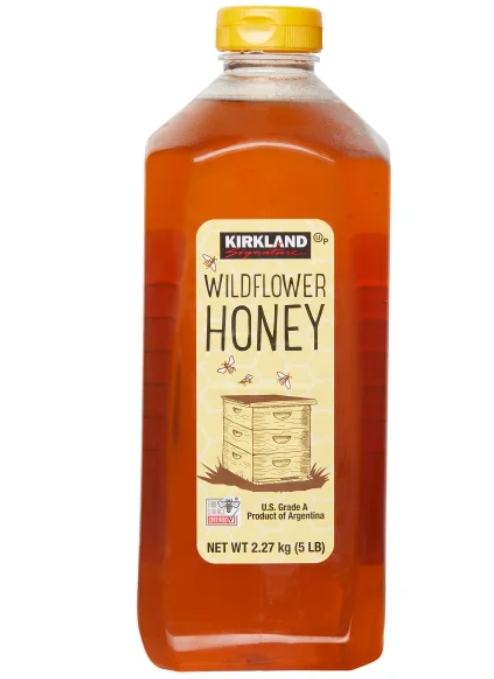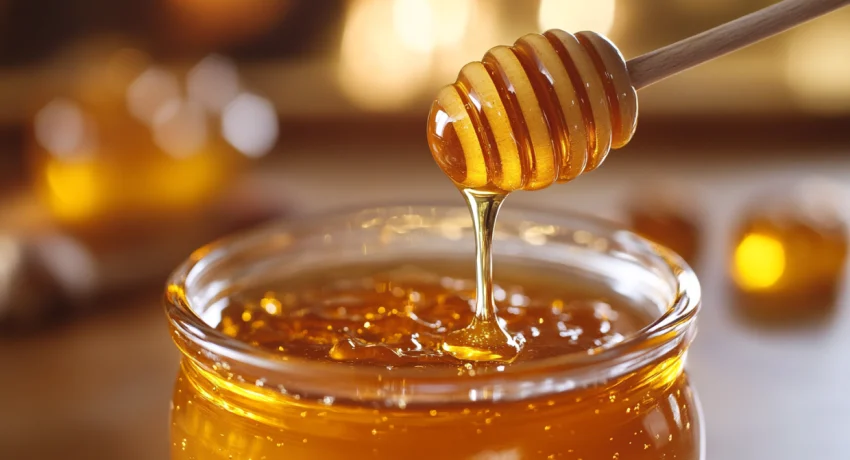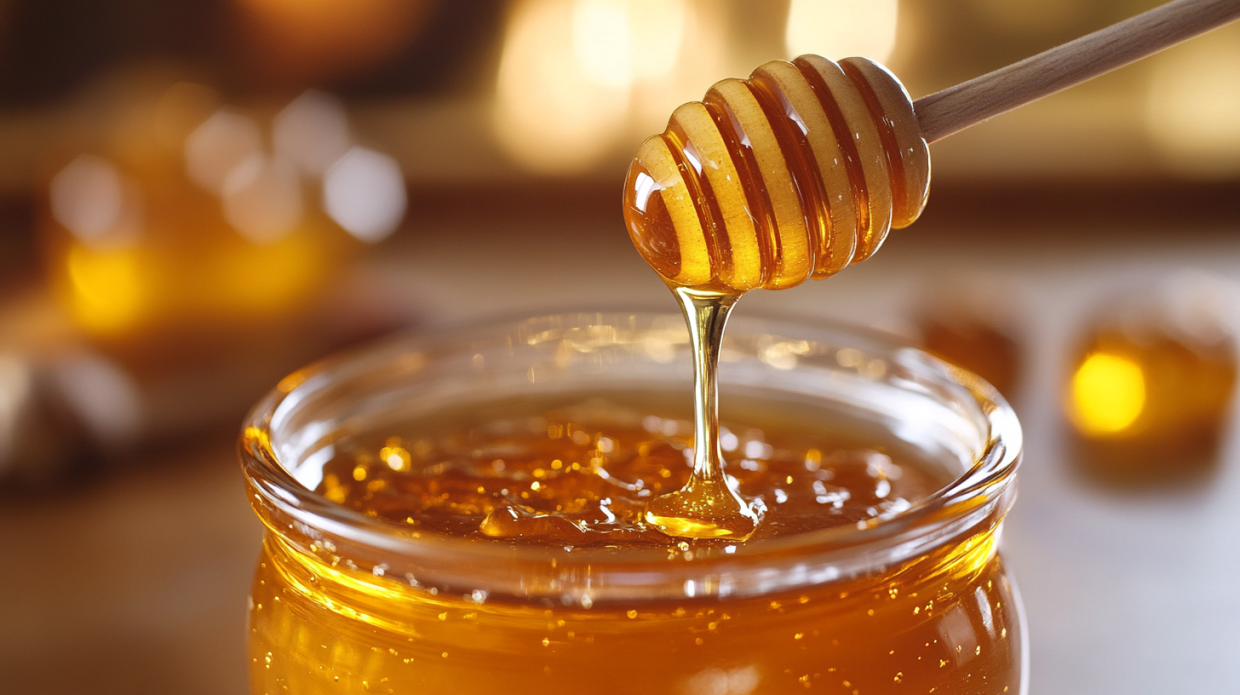
Kirkland Signature Wild Flower Honey, 5 lbs
- Kosher
- Grade A
- Product of Argentina
- True Source Certified
A Comprehensive Guide to Costco’s Golden Nectar for Honey Enthusiasts and Everyday Consumers
In the world of honey, few products generate as much curiosity and loyalty as Kirkland Signature Honey. As a staple on Costco shelves worldwide, this golden elixir has become a household name, yet many consumers still have questions about its origins, quality, and uses. Is it truly 100% pure? Where exactly does it come from? And how does it compare to premium competitors? Today, we’re diving deep into the sticky, sweet world of Kirkland Honey to uncover the truth behind this popular product.
When I first encountered the distinctive bear-shaped bottle of Kirkland Honey during my weekly Costco run, I was admittedly skeptical. Like many conscious consumers, I’ve grown wary of mass-produced honey after hearing stories of adulteration and quality concerns in the industry. But over years of research and personal use, I’ve developed a nuanced understanding of this ubiquitous product that deserves sharing.
The Purity Question: What’s Really in That Bear Bottle?
Let’s address the biggest question right away: Kirkland Honey is indeed 100% pure honey with no added sugars, syrups, or adulterants. Costco takes significant measures to ensure the authenticity of their honey, subjecting it to rigorous testing protocols that verify its purity. This commitment to quality is particularly noteworthy in an industry where honey adulteration has become a global concern.
The ingredients list on Kirkland Honey is refreshingly simple: honey. Nothing more. This purity is verified through multiple testing methods including pollen analysis and isotope testing, which can detect if the honey has been diluted with corn syrup or other sweeteners. While some ultra-processed commercial honey brands might contain additives or fillers, Kirkland maintains a commitment to delivering a genuine product.
That said, it’s important to understand that Kirkland Honey is not raw honey. It undergoes pasteurization and filtration processes, which impacts some of its natural characteristics. The honey is heated to destroy potential yeast cells and prevent fermentation, while filtration removes particles like beeswax, pollen, and air bubbles. These processes extend shelf life and create the smooth, clear appearance many consumers prefer, though they do remove some of the natural enzymes and compounds found in raw honey.
Sourcing: A Global Honey Journey
One of the most fascinating aspects of Kirkland Honey is its sourcing story. Rather than being produced locally, Kirkland Honey is typically a blend sourced from various international suppliers, primarily from Argentina, Brazil, Canada, and sometimes parts of Asia. This international sourcing strategy allows Costco to maintain consistent supply and competitive pricing year-round.
This global approach isn’t inherently negative – honey production is seasonal and regionally variable, making international sourcing a practical necessity for large-scale retailers. However, it does mean that Kirkland Honey doesn’t qualify as “local honey” for most consumers in the United States. For those specifically seeking local honey for potential allergy benefits or to support regional beekeepers, specialized local producers would be more appropriate.
The international sourcing also explains why Kirkland Honey isn’t marketed as organic. Different countries have varying standards for organic certification, making it challenging to maintain consistent organic status across multiple sourcing regions. While some of the honey in the blend may come from areas with organic practices, Costco doesn’t make this claim for the overall product.
The Value Proposition: Cost vs. Quality
Costco’s business model centers on providing quality products at competitive prices, and Kirkland Honey exemplifies this approach. A typical 5-pound (80-ounce) container of Kirkland Honey costs approximately $11.99-$14.99, depending on location and periodic sales. This translates to roughly 15-19 cents per ounce – significantly less expensive than many competitor brands.
For comparison, premium honey brands like Nature Nate’s typically cost about 40-50 cents per ounce, while specialized varieties like Manuka honey can command $2-5 per ounce or more. This substantial price difference raises a natural question: is Kirkland Honey inferior to these premium brands?
The answer is nuanced. Kirkland Honey doesn’t offer the unique bioactive compounds found in specialty honeys like Manuka, nor does it provide the distinct regional flavor profiles of single-source artisanal honeys. However, for everyday cooking, baking, and general consumption, it delivers reliable quality at an exceptional price point. The honey has a pleasantly mild flavor with subtle floral notes, making it versatile for various culinary applications.
The Consumer Experience: What Users Say
Consumer reviews of Kirkland Honey are generally positive, with most users appreciating its mild, clean flavor and exceptional value. Many praise its consistency and versatility in recipes from baked goods to marinades. The convenient packaging – typically either the iconic bear bottle or larger plastic containers with pour spouts – also receives favorable mentions.
Some criticisms emerge from honey connoisseurs who find Kirkland’s flavor profile too mild or generic compared to specialized honey varieties. Others, particularly those seeking raw honey benefits, note the lack of pollen and natural enzymes due to filtration and pasteurization processes.
A recurring observation in consumer reviews involves crystallization. Like all genuine honey, Kirkland Honey will naturally crystallize over time – a process that affects texture but not quality. Many users report crystallization occurring after several months, particularly when stored in cooler environments. This natural crystallization actually serves as evidence of honey authenticity, as adulterated honey products with high corn syrup content typically resist crystallization.
Beyond Sweetness: Culinary and Household Applications
Kirkland Honey shines in its versatility. Its mild flavor profile makes it ideal for baking, where it adds moisture and sweetness without overwhelming other ingredients. It performs excellently in marinades for meat and poultry, where it caramelizes beautifully when cooked. Many consumers also incorporate it into homemade salad dressings, smoothies, and hot beverages.
Beyond the kitchen, Kirkland Honey finds applications in homemade beauty products like face masks and hair treatments. Some consumers report using it for minor wound care or sore throat remedies, though it’s important to note that pasteurized commercial honey doesn’t retain all the antimicrobial properties of raw honey.
For bakers, Kirkland Honey presents an economical alternative to sugar. Its liquid form makes it easy to incorporate into batters and doughs, while its fructose content helps baked goods retain moisture longer than those made with granulated sugar. The mild flavor allows it to blend harmoniously with various ingredients without dominating the taste profile.
Storage and Shelf Life: The Eternal Sweetener
One of honey’s most remarkable characteristics is its exceptional shelf life, and Kirkland Honey is no exception. When stored properly in a sealed container at room temperature, Kirkland Honey can last indefinitely – archaeologists have even found edible honey in ancient Egyptian tombs thousands of years old!
While the product typically carries a “best by” date about two years from packaging, this is more a quality guideline than a safety concern. Over extended periods, the honey may darken slightly and develop a stronger flavor, but it remains perfectly safe to consume. If crystallization occurs, simply place the container in warm water (not exceeding 110°F/43°C) until the crystals dissolve.
Interestingly, honey doesn’t require refrigeration. In fact, refrigeration accelerates crystallization due to the cooler temperatures. Room temperature storage in a pantry or cabinet away from direct sunlight is ideal for maintaining liquid consistency.
Environmental and Ethical Considerations
For environmentally conscious consumers, honey production raises legitimate sustainability questions. While Kirkland doesn’t specifically market their honey as environmentally friendly or sustainably sourced, Costco has made public commitments to improving sustainability across their supply chains.
The international sourcing model does create a larger carbon footprint compared to locally produced honey. However, the bulk packaging options (particularly the 5-pound containers) reduce packaging waste compared to purchasing multiple smaller bottles of honey from other brands.
Regarding bee welfare, commercial honey production presents complex ethical considerations. Large-scale honey operations prioritize efficiency and yield, sometimes at the expense of optimal bee health. While Costco doesn’t publish specific information about the beekeeping practices of their honey suppliers, their scale and price point suggest conventional rather than artisanal production methods.
Consumers particularly concerned with bee welfare and environmental impact might prefer supporting local beekeepers who practice sustainable methods, even at a premium price. However, for those balancing multiple considerations including budget, Kirkland Honey represents a reasonable compromise between quality, cost, and ethical considerations.
Comparing Varieties: Kirkland vs. Premium Honeys
The honey market offers tremendous variety, from mass-produced options to specialized artisanal products. Understanding how Kirkland compares to these alternatives helps consumers make informed choices based on their specific needs.
Compared to premium raw honey brands, Kirkland lacks the diverse enzyme content and potential health benefits associated with unprocessed honey. Raw honey enthusiasts often cite benefits including enhanced digestive health, local allergy relief, and superior antimicrobial properties. These benefits are significantly reduced or eliminated through pasteurization and filtration.
Against specialty varieties like Manuka honey from New Zealand, Kirkland lacks the concentrated methylglyoxal compounds responsible for Manuka’s unique antibacterial properties. Similarly, it doesn’t offer the distinctive flavor profiles of regional monofloral honeys like orange blossom, buckwheat, or tupelo.
However, when compared to other mass-market honey brands at similar price points, Kirkland frequently earns higher marks for consistency and value. Consumer testing generally places it above store-brand honey from conventional supermarkets in blind taste tests, despite similar processing methods.
The Packaging Question: From Bears to Bulk
Kirkland Honey comes in several packaging options, with the most common being the 24-ounce bear-shaped squeeze bottle and the 5-pound (80-ounce) plastic container with pour spout. Some Costco locations also occasionally offer larger foodservice sizes for commercial customers or particularly honey-enthusiastic households.
The iconic bear bottle design features a no-drip cap that helps control dispensing, making it particularly convenient for daily use. Meanwhile, the larger containers offer superior value for frequent honey users or bakers who incorporate honey into multiple recipes.
Both packaging types are made from food-grade plastic, which raises some environmental considerations but offers practical benefits including durability, lightweight handling, and precision pouring. The containers are recyclable in most municipal programs, though the specialized shape of the bear bottles can sometimes complicate recycling processes.
For those concerned about plastic, transferring honey to glass containers after purchase presents a viable alternative. Honey stores excellently in glass, though it lacks the squeeze convenience of the original packaging.
Beyond the Basics: Specialized Uses
Beyond its obvious role as a sweetener, Kirkland Honey can serve numerous specialized functions in a well-stocked kitchen. Its hygroscopic properties (ability to attract and hold water molecules) make it exceptional for moisture retention in baked goods. Many artisan bread bakers incorporate small amounts of honey into their doughs to extend freshness and create complex flavor development during fermentation.
In beverage applications, honey’s solubility in both hot and cold liquids makes it versatile for everything from hot tea to cold brew coffee. Unlike granulated sugar, it dissolves readily in cold liquids, making it ideal for summer beverages. The subtle floral notes can enhance drink profiles without overwhelming the primary flavors.
For preserving fruits, honey’s natural antimicrobial properties combined with its ability to create osmotic pressure (drawing moisture out of microbial cells) makes it an effective natural preservative. Fruits preserved in honey develop complex flavors while maintaining structural integrity better than those preserved in simple syrup.
Some home cooks even use Kirkland Honey in cheese pairings, finding its mild sweetness complements both creamy and sharp varieties without competing with their complex flavors. A small drizzle over aged cheeses creates a lovely sweet-savory contrast that elevates simple appetizers.
The Nutritional Profile: Sweet Benefits and Considerations
From a nutritional perspective, Kirkland Honey offers the same basic profile as other commercially processed honeys. One tablespoon (21 grams) contains approximately 60 calories and 17 grams of carbohydrates, primarily in the form of fructose and glucose. Honey contains trace amounts of vitamins and minerals including B vitamins, calcium, copper, iron, magnesium, manganese, phosphorus, potassium, sodium, and zinc – though not in quantities significant enough to contribute meaningfully to daily nutritional requirements.
Honey does provide small amounts of antioxidants, primarily flavonoids and phenolic acids, though pasteurization reduces these somewhat compared to raw varieties. The antioxidant content varies depending on the floral sources of the honey, with darker honey varieties generally containing higher concentrations.
For those monitoring blood sugar, it’s worth noting that honey has a lower glycemic index than refined sugar, meaning it causes a less dramatic spike in blood glucose levels. However, it still represents a concentrated sugar source and should be consumed mindfully by those with diabetes or blood sugar concerns.
Parents should remember that honey – including Kirkland Honey – should never be given to infants under 12 months due to the risk of infant botulism. While extremely rare in older children and adults, infants’ immature digestive systems may not inactivate botulinum spores that can occasionally be present in honey.
The Verdict: Is Kirkland Honey Worth Buying?
After analyzing all aspects of Kirkland Honey, from sourcing to flavor profile to value proposition, a nuanced picture emerges. For everyday cooking, baking, and general sweetening needs, Kirkland Honey delivers exceptional value with reliable quality. Its mild, versatile flavor profile works well in diverse applications, while its competitive pricing makes it accessible for frequent use.
However, for specific applications like medicinal uses, local allergy relief, or distinctive culinary creations requiring pronounced honey character, specialized honey varieties might better serve those purposes. Similarly, those prioritizing raw honey benefits should look to unpasteurized alternatives, despite the higher price point.
Perhaps the most balanced approach is maintaining Kirkland Honey as a kitchen staple for everyday use while selectively incorporating specialty honeys for specific applications or occasions. This strategy maximizes value while still allowing for the exploration of honey’s remarkable diversity.
Conclusion: The Sweet Spot Between Quality and Value
In the complex world of commercial honey, Kirkland Signature has carved out a distinct position that balances quality assurance with exceptional value. While it doesn’t offer the distinctive characteristics of premium specialty honeys, it delivers consistent quality at a price point that makes this natural sweetener accessible for everyday use.
For conscious consumers navigating the honey market, understanding exactly what Kirkland Honey is – and isn’t – helps set appropriate expectations. It’s a reliable, pasteurized, internationally sourced honey blend that delivers on its promise of purity without the premium price of specialized varieties.
Whether drizzled over morning toast, incorporated into a complex marinade, or sweetening an afternoon tea, Kirkland Honey performs its sweet duty admirably. In a world where food quality often correlates directly with price, it represents a rare exception – a product that delivers genuine quality at a remarkably accessible price point. For most households, that makes it worthy of its enduring popularity on Costco shelves worldwide.
The next time you find yourself contemplating that familiar bear bottle or substantial jug in the Costco aisle, you can make your selection with confidence, knowing exactly what you’re getting – and what exceptional value it represents in your kitchen arsenal.




